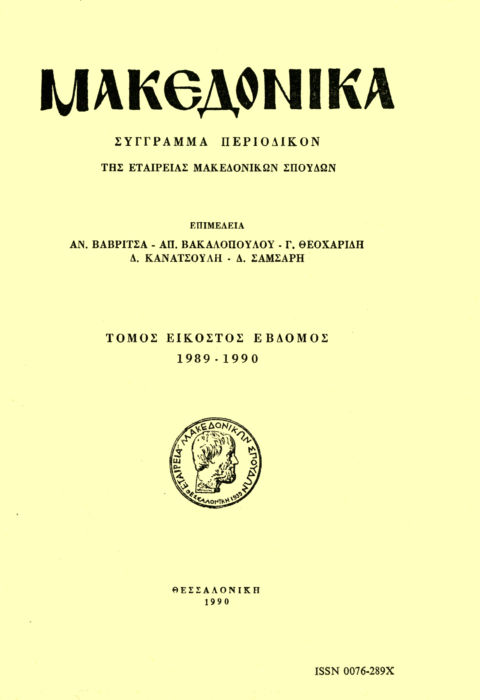The early christian church outside Thessaloniki’s East city wall
Abstract
The author presents the results and conclusions of the excavation of a church which was discovered in 1980 outside Thessaloniki’s east city wall on the site of the pre-Christian and Christian burial ground. The church has not been excavated in its entirety, because its west section lies underneath the grounds of the International Fair, but it is very probably in the style of a Hellenistic basilica. The semicircular passage around the interior of the bema apse presents aspects which have not been observed in the usual circular con structions of the early Christian basilicas. This leads to the supposition that it may be connected with special cult ceremonies (possibly of martyrs’ cults). The structures which have been discovered in the usual position of a basili ca’s synthronus cannot be identified with any certainty as a synthronus, and similarly the tomb discovered on the same axis as the church is impossible to be identified. A second, higher floor found at the west end of the excavation area seems either to be due to repair work or to belong to a second construction layer. On the basis of the data acquired so far and in particular the treasure trove of coins found beside the enkainion of the church may be dated to somewhere between the last quarter of the fourth century and the middle of the fifth century. Owing to the lack of sufficient archaeological evidence, the author considers it premature to identify the church as that of St Anysia, known to us from various sources.
Article Details
- How to Cite
-
Μακροπούλου Δ. (1983). The early christian church outside Thessaloniki’s East city wall. Makedonika, 23(1), 25–46. https://doi.org/10.12681/makedonika.329
- Issue
- Vol. 23
- Section
- Articles

This work is licensed under a Creative Commons Attribution-NonCommercial-ShareAlike 4.0 International License.
Authors who publish with this journal agree to the following terms:
- Authors retain copyright and grant the journal right of first publication with the work simultaneously licensed under a Creative Commons Attribution Non-Commercial License that allows others to share the work with an acknowledgement of the work's authorship and initial publication in this journal.
- Authors are able to enter into separate, additional contractual arrangements for the non-exclusive distribution of the journal's published version of the work (e.g. post it to an institutional repository or publish it in a book), with an acknowledgement of its initial publication in this journal.
- Authors are permitted and encouraged to post their work online (preferably in institutional repositories or on their website) prior to and during the submission process, as it can lead to productive exchanges, as well as earlier and greater citation of published work (See The Effect of Open Access).




